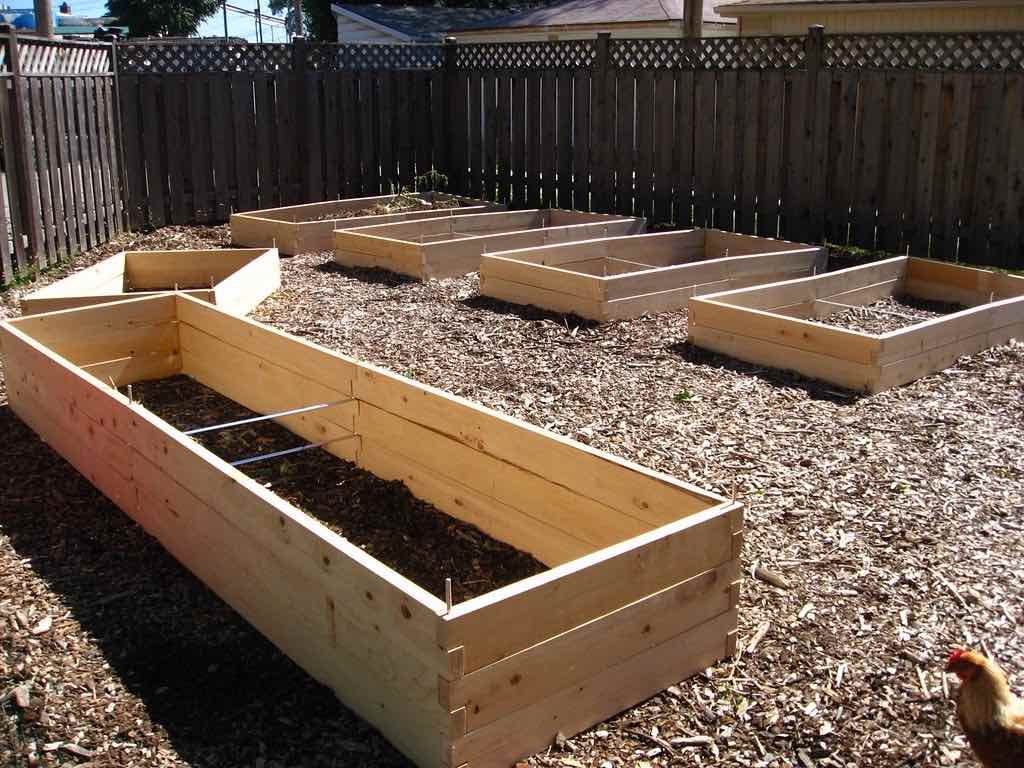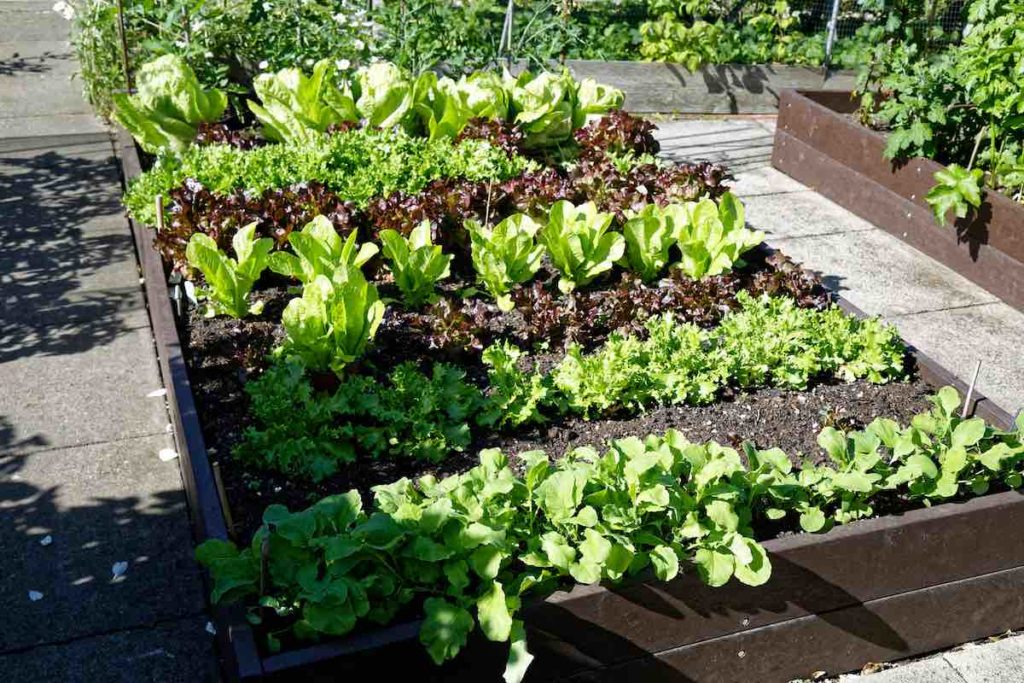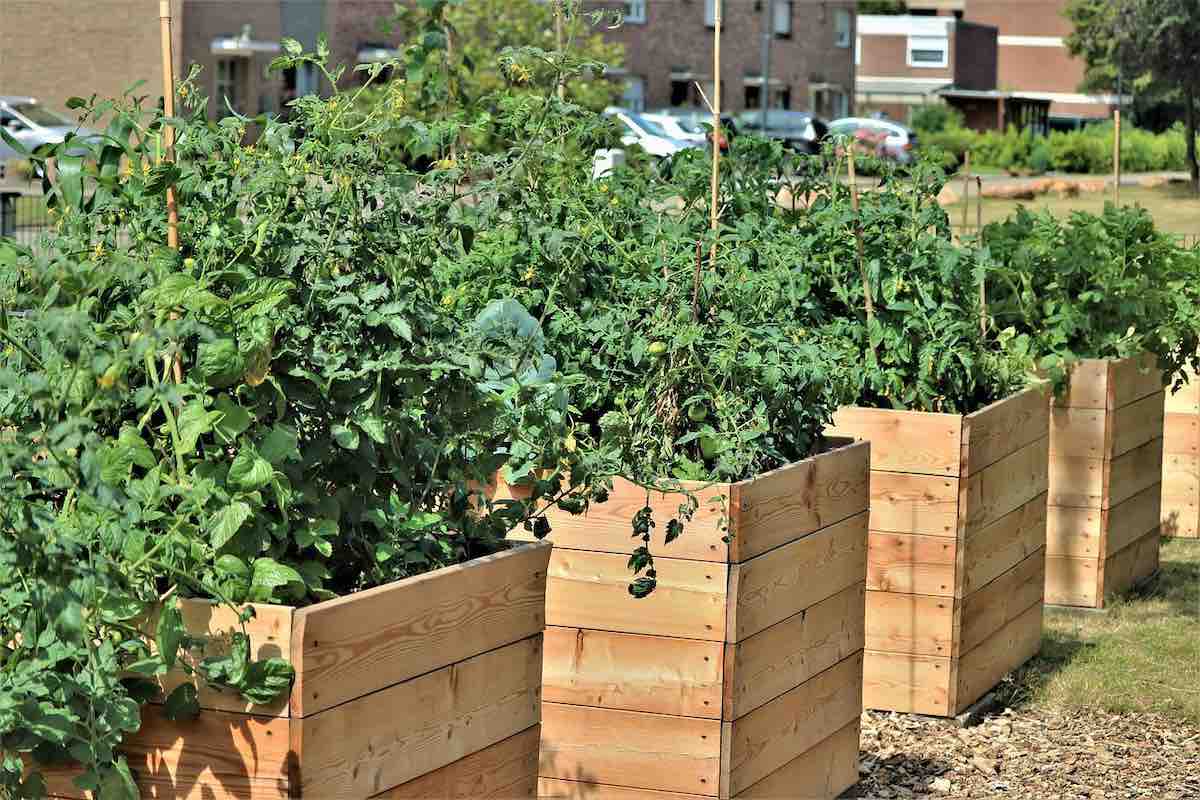Raised bed gardens are an excellent way to create a healthy-looking farm in your yard. They may keep your lawn looking great while keeping it healthy and prolific. But do you know how to build durable raised garden beds for your home & garden?
In this post will show you how to build durable and long-lasting raised garden beds for your farm. We’ll cover:
- The benefits of raised garden beds
- The best materials for raised garden beds
- How to build raised garden beds
- What to use for filling the raised beds
- What can I use my garden beds for?
Do you need to know more about them to ensure a prolific farm in your own yard? Then, keep on reading to explore more.
The Benefits of Raised Garden Beds
Raised garden beds have several benefits over traditional in-ground gardens. They are easier to maintain and keep weed-free, and they allow you to control the quality of the garden soil.
In fact, they keep the plants elevated from the ground to help you reach them easily. So, you can avoid kneeling or bending over when gardening.
However, that’s not it. There’s more to the benefits of these raised beds. Here’s a quick overview:
- A raised bed gardening is easy to drain so that it doesn’t cause any soil erosion.
- During Spring, these beds get warmed up quickly. As a result, the plant roots get healthy growing energy and ensure the speedy maturation of food crops.
- You can regulate the garden soil you put in them and plant the seeds more intensively.
- As the plants are mostly seeded together in an enclosed place, it allows them to mature more quickly.
- Raised beds help to keep your garden organized and tidy.
- A raised bed construction doesn’t require a much larger space than a conventional row garden. So, you can fit this garden bed almost anywhere on your lawn.
- You can easily separate and rotate the crops annually.
- It enables the plants to be raised in an enclosed space too. So, it won’t cover much of the ground.
The Best Materials for Raised Garden Beds
There are a variety of materials you can use to build raised beds. But the most critical consideration is durability. You should use materials that will last for a long time.
Material

Cedar, untreated wood, and modern treated wood are popular choices for these raised beds as they are naturally rot-resistant. Other durable options include concrete blocks, bricks, pressure-treated lumber, railroad ties, and pallets.
Tools
Only the above materials are not enough for building raised beds. You should also get some great power tools to help you make the garden boxes easily. Here are a few tools to consider:
- A sharp spade for digging out the area where you want to build your raised bed.
- A hoe for breaking up any large clumps of dirt in the area.
- A level to make sure your raised bed is level before you start filling it with soil.
- A tape measure to measure the length and width of your raised bed.
- A hammer to drive in any nails or staples needed to hold the wood frame together.
- A drill to pre-drill any holes needed for screwing the wood frame together.
- A saw that will cut down wood pieces to size if necessary.
- Screws or nails to assemble the wood frame of your raised bed.
- 8-foot lumbers and Pressure-treated wood.
Also read our article about must have gardening tools around your farm.
How to Build Raised Garden Beds
Building raised garden beds is a simple weekend project. You don’t need heavy tools or materials or any giant backyard. All you will require is the correct instructions and construction adhesive.
So, here is a basic overview of how to build durable raised garden beds:
Getting Started
First, decide where you want to put your raised garden beds. They can go anywhere in your yard, but it’s a good idea to pick a spot that gets plenty of sunlight.
Then, measure the area for the raised bed. You’ll need to know how large they should be to fit perfectly in your space.
Lastly, choose the material wisely. A raised bed can be composed of many different materials, including wood, stone, and metal.
The Process
Cut off two pieces of those 8-foot lumbers in half that you bought from the store. It would be best to mark each plank in the middle to create a 4X4 footboard, resulting in two planks from each lumber. For making a 4X4 foot raised bed garden, you may cut two planks in half.
Then, it’s time to drill pilot four holes in each corner side of the planks. It will give you enough room for screening the planks together with deck screws.
Make sure not to make holes much thinner than the screw themselves as then the screws will not fit in perfectly.
One end of each board will overlap and screw directly into the next, so make the holes accordingly in the same position.
For a sturdier frame and extra bracing, you may cut four pine stakes and put them at the corner of each plank for bracing.
Assemble the Raised Bed
Now it’s time to put together the planks and create the bed.
- Set up the beds. Line the walls such that each plank overlaps the one before it, with the drill pilot holes at the overlapping edge.
- The walls should be screwed together tightly so that it doesn’t get broken and stay secured. That will give it a better fitting.
Fill the Bed Garden Space
- Finally, as your entire bed is ready, it’s time to fill it in with nutrient-rich compost mix. The composts may be anything from homemade to commercially produced.
- Then, use a specific vegetable planting topsoil to cover the compost. Such soil has a fine texture suitable for immediate sowing and planting.
- Fill your beds to the brim! The dirt will settle, especially if you water it frequently. You may easily top it off with compost as it sets.
What can I Fill My Raised Beds with?
It would help if you always filled the raised beds with some organic matter. But depending on your budget, supplies, and the type of area you live in, there are some things to consider. Here’s everything you need to know,
- If you’re on a budget, one of the best options is to fill your raised beds with compost. This will provide nutrients for your plants and help them grow. If you’re developing a vegetable garden, you may consider adding some manure to the compost to give them an extra boost.
- If you don’t have to worry about watering as much, sand or gravel can be a good option for filling a simple raised bed. These materials will help drainage and prevent the root crops from getting too wet. However, please be aware of using too much sand or gravel. That may cause soil compaction, which blocks the air into the soil surface.
- If you live in an area prone to drought, then it might be good to use a material that holds water well. One option is to use coco coir, made from coconut husks. This material can hold up to eight times its weight in water, making it ideal for areas that don’t get a lot of rainfall.
- Another option for filling your raised garden beds is to use loose soil. However, the soil you utilize must be of high quality. The best way to do this is to buy soil from a garden center or nursery. You should also ensure that the soil you choose is free of chemicals and weed seeds.
What Can I Use My Garden Beds for?
Garden beds can be used for a variety of purposes, including:

Herb and Spices
Herbs and spices are a great way to add flavor to your cooking. If you have a sunny spot in your garden, consider planting basil, oregano, thyme, or rosemary.
Vegetable Gardening
Fresh veggies are the best! If you have a sunny spot in your garden, consider planting tomatoes/cherry tomatoes, peppers, squash, or eggplant.
Fruit Garden
Garden beds are the perfect place to grow your fruits as well. You can easily ensure that they have everything they need to thrive.
Flowers
Flowers can brighten up any space, and they’re also great for attracting bees and other pollinators to your garden. If you have a shady spot, try planting some impatiens or begonias.
Creating a Beautiful Landscape
Garden beds can liven up your yard or garden by adding color and charm. By carefully choosing the plants you want to grow, you can create a stunning landscape that will be the envy of your neighbors.
Attracting Wildlife
If you want to attract birds, bees, and other wildlife to your garden, consider planting various flowers and plants in your garden beds. By providing food and shelter for these animals, you’ll be able to create a backyard oasis that everyone can enjoy.
Frequently Asked Questions about Building Durable Raised Garden Beds
Different materials can have various benefits depending on the garden’s specific needs. However, some widely used materials for raised garden beds include wood (e.g., cedar), stone, and concrete.
You can do a few things to make sure your raised garden bed doesn’t rot.
First, choose a naturally resistant material to rot, such as cedar or redwood.
Second, make sure the bed is well-ventilated so that air can circulate and prevent moisture from building up.
Finally, don’t over-water the bed; allow the soil to dry out between watering and not become waterlogged.
Conclusion
If you’re looking for a way to add some durability and structure to your farm, raised garden beds are a great option. By following the steps outlined in this blog post, you can quickly build your own raised garden beds that will last for years.
With just a few supplies and some basic carpentry skills, you can create a functional and beautiful garden space for your plants. So, what are you waiting for? Get started building your raised garden beds today!

2 replies on “How to Build Durable Raised Garden Beds for Your Farm”
[…] can quickly turn leaves, branches, and other organic matter into a fine mulch that you can use on the flower beds or over winter crops like kale, cabbage, and […]
[…] microgreens grow best outdoors in containers or beds and can be harvested in 7-14 […]